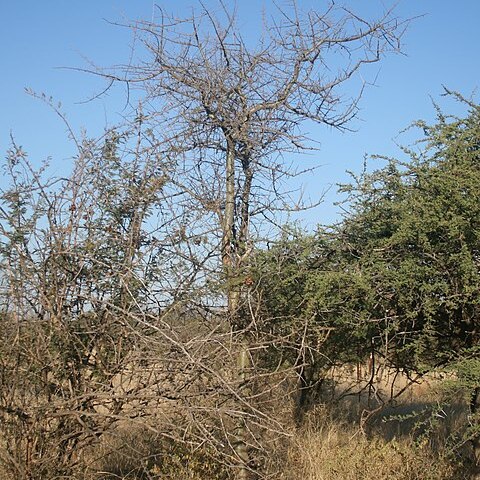Polygamous or dioecious tree with a single trunk, 2-10 m tall, occasionally shrub-like; bark yellowish green or greyish green, flaking in small yellowish papery pieces; young branchlets glabrous, spine-tipped. Leaves usually simple but on long shoots often trifoliolate with smaller lateral leaflets, with long glandular hairs at base but otherwise glabrous, green, subsessile, margin crenate-serrate, occasionally almost entire, apex acute or obtuse, base cuneate, lamina of simple leaves/terminal leaflet obovate or elliptic (20-)35(-65) x (12-)25(-45) mm, lateral leaflets elliptic, (8-)15(-30) x (4-)7(-15) mm. Inflorescence: reduced cymes or flowers borne in clusters. Flowers bisexual, occasionally unisexual, hypogynous. Pedicel 0.5-1.0 mm long, pedicel and calyx with large glandular hairs. Disc 4-lobed, not folded, inside of lobes not grooved, not adnate to perianth. Stamens 8. Fruit subglobose, ±14 x 13 x 12 mm, glabrous; putamen rugose, with a hump on less convex face; pseudo-aril red, with 4 arms of equal length reaching almost to apex of putamen. Also recorded from Zimbabwe, Zambia, Mozambique and Angola.
A shrub or tree. It is erect with a single stem. It can grow 10 m high. The bark is grey to green. The leaves have an unpleasant smell. The are usually simple but can have 3 leaflets. The male and female flowers are often on separate plants. The flowers are small. The fruit are round and 14 mm across.
Polygamous or dioecious tree, up to 10 m high. Branchlets spine-tipped. Leaves simple; lamina obovate or elliptic, usually crenate-serrate. Calyx with large glandular hairs. Flowers red.


